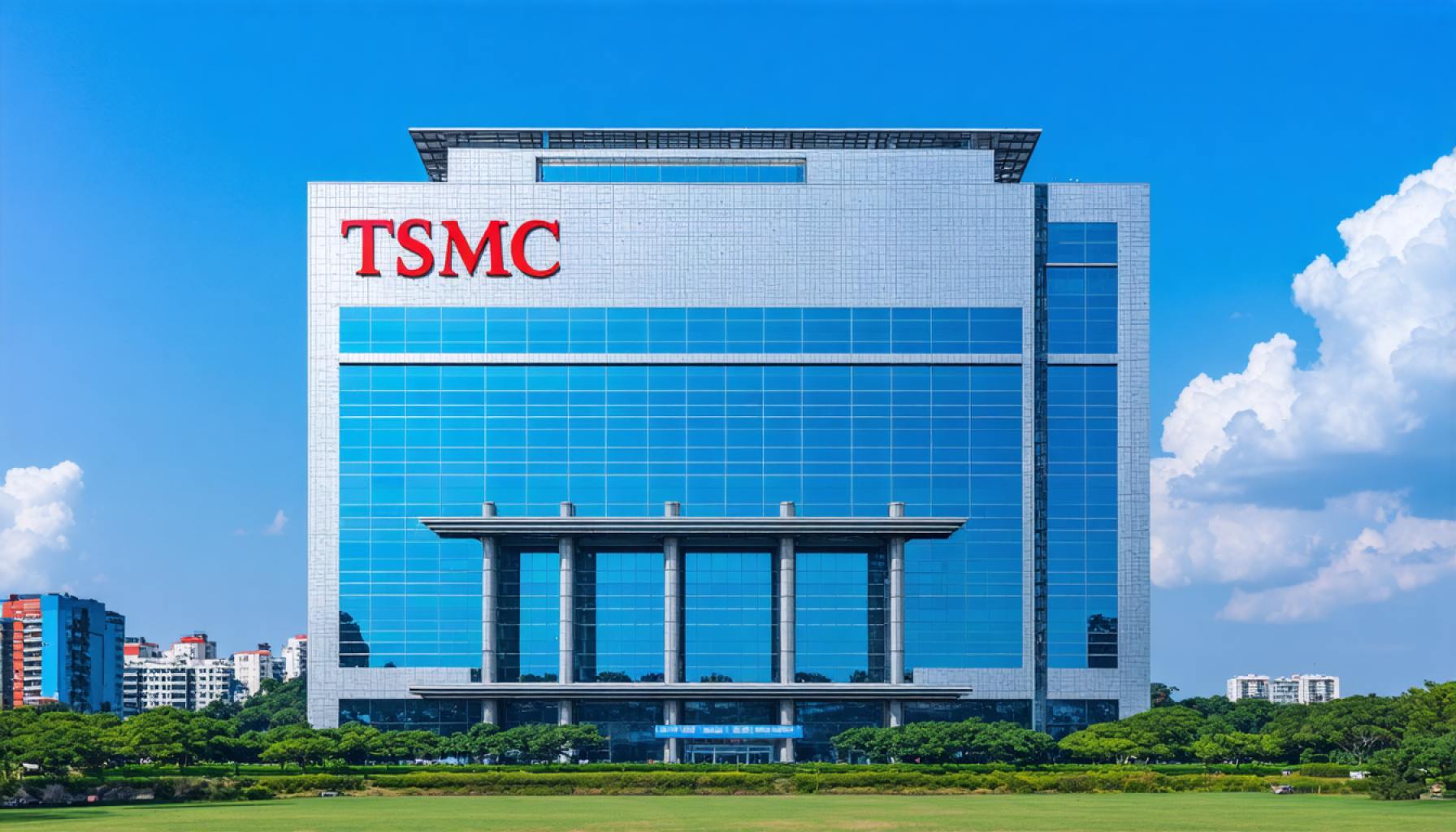- TSMC is facing both challenges and opportunities amid economic tensions, with a recent 27% share price decline.
- It controls over 50% of the global contract chip production and 90% of advanced chip manufacturing, supporting tech leaders like Apple and Nvidia.
- Despite market disruptions, TSMC posted a 41.6% revenue increase, highlighting its resilience and strategic adaptability.
- Investment in global expansion, including a $100 billion U.S. investment under the CHIPS Act, aims to mitigate geopolitical risks.
- With a price-to-earnings ratio of 21, TSMC remains a strong prospect for investors, as geopolitical tensions are balanced by strategic global interests.
- TSMC exemplifies innovation in the semiconductor industry, making it a critical player in future technological advancements.
Taiwan Semiconductor Manufacturing Company (TSMC), the silent giant powering today’s tech revolution, stands at a crossroad bustling with both challenges and opportunities. In a year when AI stocks have stumbled under the weight of economic tensions and valuation stresses, TSMC’s shares have marked a 27% decline from their recent apex, echoing a broader market unease.
Yet, beneath the noise of trade wars and market tremors, TSMC remains a pivotal force within the global tech supply chain. As the world’s largest contract semiconductor manufacturer, TSMC commands over 50% of all contract chip production, and a staggering 90% in the niche of advanced chips. These numbers are not mere statistics; they signify the heartbeat of innovation, as tech juggernauts like Apple and Nvidia lean heavily on TSMC’s cutting-edge silicon technology to power a new era of artificial intelligence.
Recent earnings tell a compelling story of resilience and promise. A remarkable 41.6% revenue surge, reaching $25.5 billion despite January’s seismic disruptions, showcases TSMC’s agility and strategic depth. The company’s mastery in crafting 3nm and 5nm chips has sustained, if not heightened, the momentum in AI demand, while mitigating the seasonal ebb in smartphone engagements.
Crucially, TSMC continues to invest ambitiously in its global footprint, aiming to diffuse geopolitical risks and harness untapped markets. This global expansion, propelled by a strategic embrace under the U.S. CHIPS Act, includes plans for significant investments exceeding $100 billion in American soil. These ventures not only solidify TSMC’s standing as a tech stalwart but also promise to redefine the semiconductor landscape altogether.
Despite the trepidation that shadows geopolitical tensions, TSMC’s potential remains emboldened by its trivial price-to-earnings ratio of 21, presenting a robust case for savvy investors. The tensions surrounding Taiwan air more as distant claps of thunder than imminent storms. Industry insiders reckon that the intertwined economic objectives of global superpowers will likely forestall any drastic conflicts, leaving room for harmonious co-existence amidst competitive rivalry.
In essence, TSMC isn’t just a buy; it’s a beacon of innovation and strategic foresight. As semiconductors intricately weave into more facets of daily life, betting against TSMC seems increasingly an exercise in futility. This is the opportune moment to look beyond the surface-level ripples and see TSMC for what it truly is: a cornerstone of future technological evolution.
Uncovering TSMC: The Silent Powerhouse Shaping the Future of Technology
TSMC’s Strategic Position in the Semiconductor Industry
Taiwan Semiconductor Manufacturing Company (TSMC) is not just a cornerstone of technological innovation; it embodies the future direction of the global tech industry. As the world’s largest contract semiconductor manufacturer, TSMC controls over 50% of the global market share and dominates 90% of advanced chip production. Here’s a closer look at why TSMC is pivotal to the tech revolution and what lies ahead for this industry titan.
How TSMC is Navigating Global Challenges
1. Global Expansion and the CHIPS Act: TSMC’s strategic allocation of over $100 billion in global expansion, particularly in the U.S., arises from the CHIPS Act incentives. Such investments are not only a defensive strategy against geopolitical tensions but also an offense to reach untapped markets.
2. Advanced Chip Production: TSMC has demonstrated unparalleled capability in producing 3nm and 5nm chips, which are at the heart of AI technologies. This technological mastery ensures robust demand from tech giants like Apple and Nvidia.
3. Economic Resilience: Despite a 27% dip in share value, TSMC’s solid financial performance, with a 41.6% revenue increase to $25.5 billion, demonstrates resilience and adaptation to economic pressures.
Real-World Use Cases for TSMC’s Innovations
– Artificial Intelligence: TSMC’s cutting-edge chips are crucial for AI development, enabling more powerful and efficient AI applications.
– Consumer Electronics: Partnering with tech giants, TSMC accelerates the innovation cycle of consumer electronic devices, making them more efficient, faster, and smarter.
Market Forecasts & Industry Trends
– Semiconductor Demand: Anticipated growth in the semiconductor market is driven by increased demand in AI, IoT, and 5G technologies. TSMC’s leadership in chip technology places it at the forefront of capturing significant market opportunities.
– Sustainability: As sustainability becomes a priority, TSMC is investing in greener manufacturing processes, aligning with global trends towards eco-friendly technology solutions.
Insights & Predictions
– Investment Viability: With a price-to-earnings ratio of 21, TSMC presents an attractive investment opportunity. Analysts project a favorable growth trajectory as geopolitical tensions are balanced by collaborative economic objectives.
Controversies & Limitations
– Geopolitical Risks: Tensions in Taiwan pose a persistent risk. Yet, the intertwined economic interests of global superpowers could defer drastic conflicts, providing a relatively stable operating environment for TSMC.
Pros & Cons Overview
Pros:
– Market Leader in Semiconductor Manufacturing
– High Demand for Advanced Chips
– Strategic Global Expansion
Cons:
– Geopolitical Uncertainty
– Dependency on a Handful of Major Clients
Actionable Recommendations
– Investment Strategy: Consider long-term investments in TSMC, leveraging its strategic position in the semiconductor space.
– Technology Adoption: Businesses looking to leverage AI and IoT should consider integrating TSMC’s advanced chips for enhanced performance and reliability.
Related Reading
For more insights into semiconductor trends and global tech advancements, visit TSMC.
By staying informed about TSMC’s strategic movements and market dynamics, stakeholders can better navigate the complex landscape of the semiconductor industry. TSMC isn’t just a powerhouse today; it’s a beacon for tomorrow’s technological evolution.
